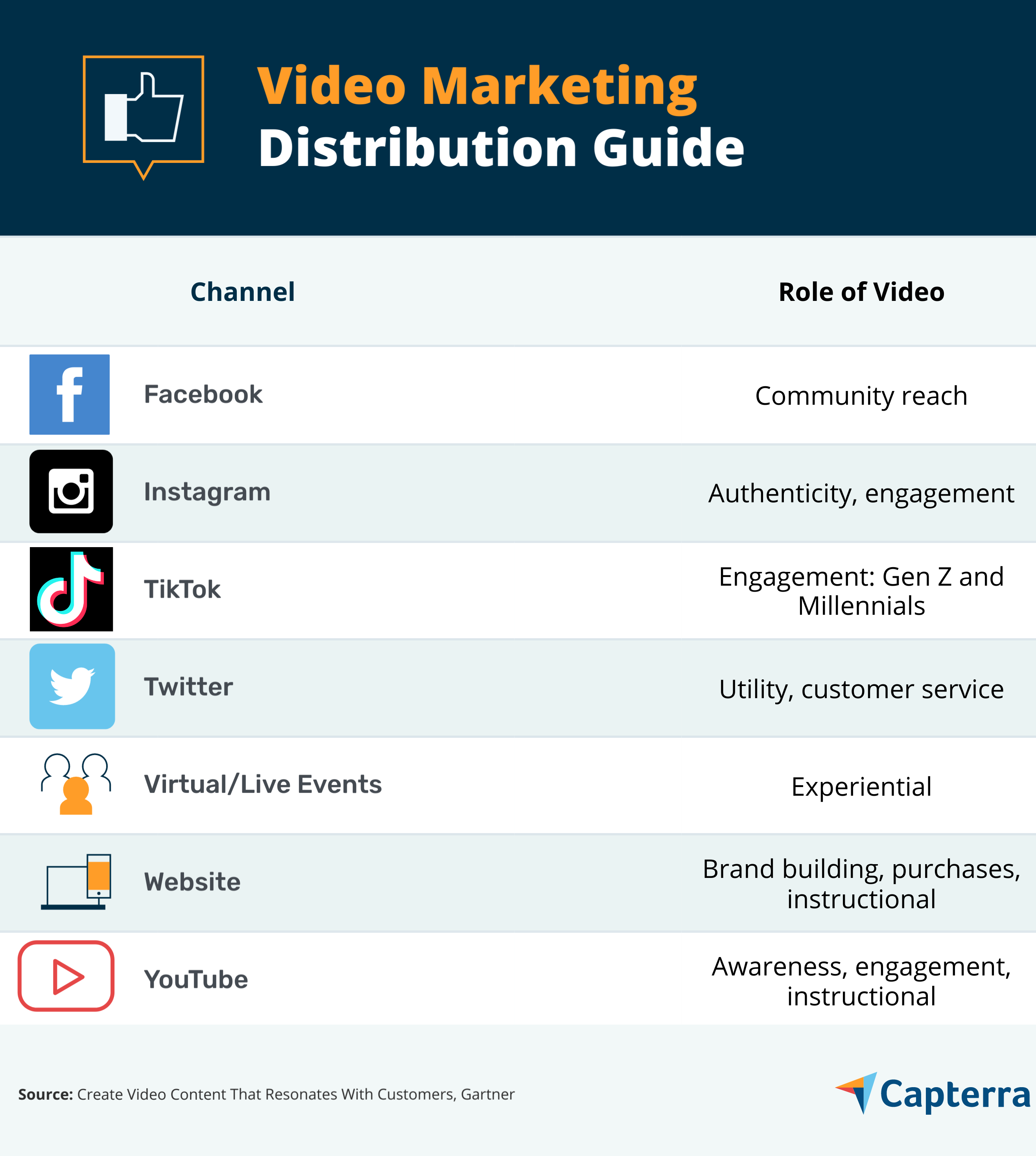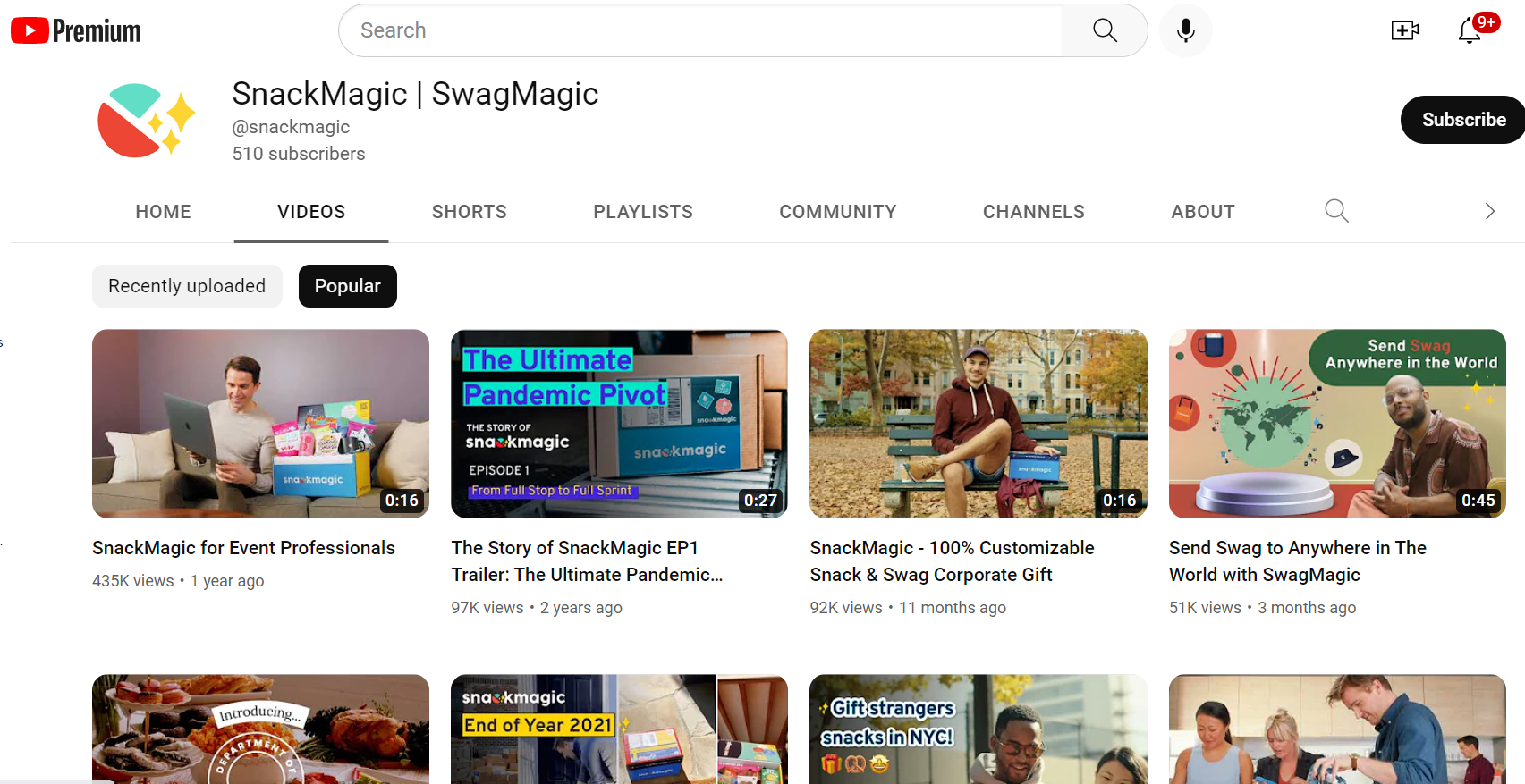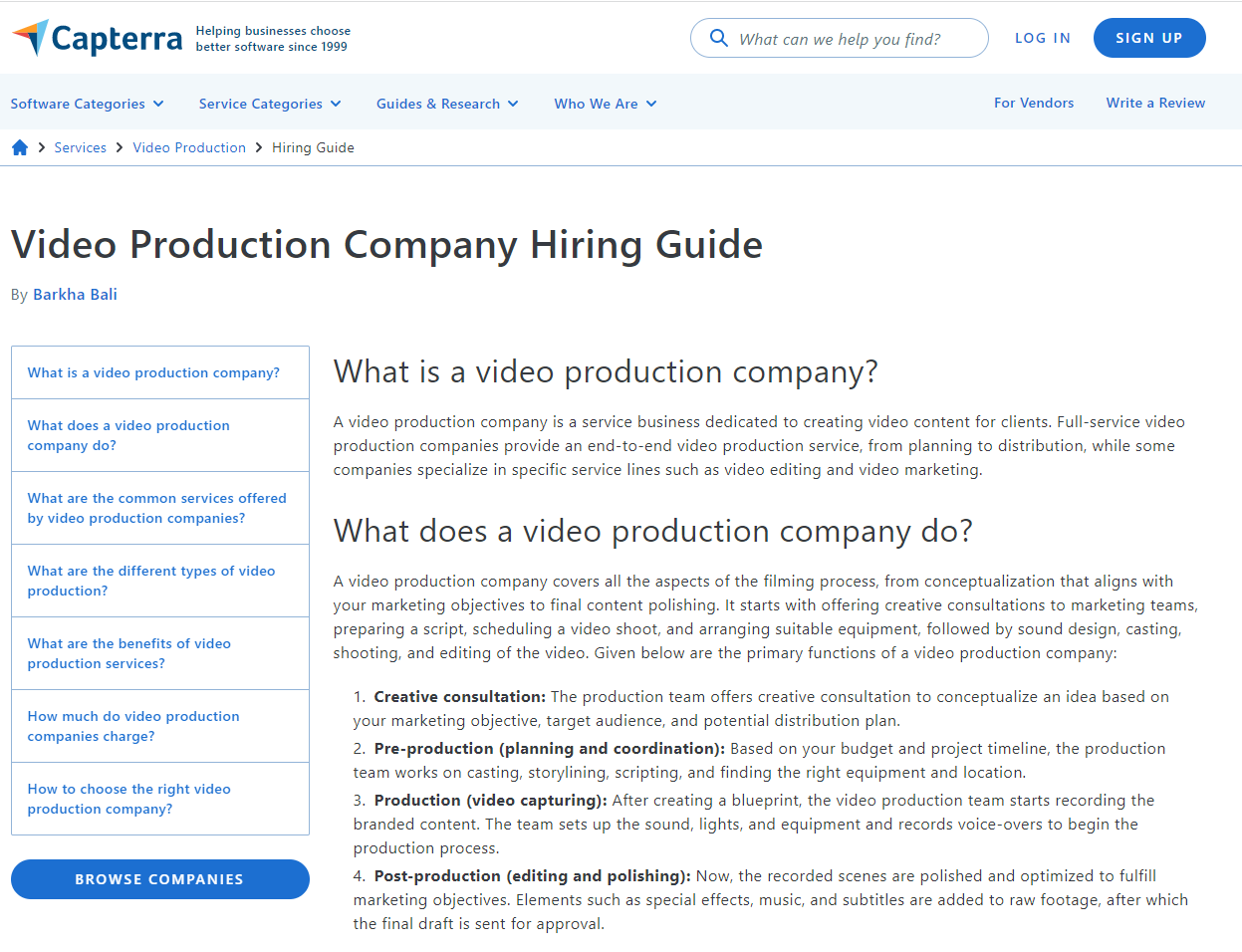Video is key to any marketing plan, but first you need a good strategy in place
As a marketing leader, you’re probably well aware of how important it is to include video in your marketing strategy. After all, more than 75% of U.S. adults spent up to two hours watching short-form digital video content each day in 2021.[1]
But simply including video in your marketing plan isn’t enough. You need to take a strategic, research-based approach in order to produce the right type of video content, and then promote it on the right channels so that you’re not wasting resources for no return on your investment.
If that challenge resonates with you, you’re in the right place. In this article we’ll help you figure out what type of video content to produce and where to distribute it.
What is a video marketing strategy?
A video marketing strategy is a marketing plan designed to maximize the reach and return of a company’s video content marketing efforts. A video marketing strategy typically involves plans for what channels to promote video content on, what type of content to produce, how long the videos should be, and how often to post video content.
A video marketing strategy is typically conceived and/or tweaked by the marketing team at the beginning of any new video content marketing campaign.
Why do you need a video marketing strategy?
With so many eyes on digital video content, it’s hard to go wrong with a video content marketing campaign. But not having a strategy in place is a good way to sabotage your efforts. If you just start recording videos and posting them online without much thought, you’ll be gaining experience but wasting valuable time and resources.
A better approach is to put together a game plan that includes your objectives, who you’re trying to reach, and how you’re going to reach them. That way, when you do start recording and posting videos, you’ll not only have a blueprint to follow but also a baseline to compare your results to. This will help you improve the effectiveness of future campaigns.
So exactly how should you go about planning a successful video marketing strategy? Let’s get into it, with tips from actual video marketing experts and strategies inspired by Gartner.[2]
Find providers that can help with your business needs by using our lists of video production companies by location.
5 steps to building your video marketing strategy

Every video marketing campaign is different and will depend on the specific needs and capabilities of each individual business. But there are some steps that every business can take to pave a pathway to success and set out on the right foot. Let’s take a look.
1. Set your goals and objectives
While it may seem obvious, it’s always a good idea to establish specific goals to serve as guideposts for the next steps in your video marketing campaign. These goals should be a little more specific than “grow revenue” or “attract new customers.”
Think more like “grow revenue by X% driven by increased sales for a specific product” or “increase customers in a specific demographic group by X%.” This way you can better track the effectiveness of your video marketing campaign and quickly decide which efforts should be continued or expanded.
“You need a goal, a reason behind the effort you are making. If you can't point at the desired result for your video marketing efforts, how will you know that it was effective in the first place? Once you establish your goals, you will have an objective that can tell you if it was a success or not.”


Lucie Chavez
CMO of Radaris, a Boston-based people directory[3]
Here are some questions you can ask your leadership team to help establish these goals and objectives:
What are our biggest organizational goals for the coming year?
How can we best align our marketing efforts with our brand identity?
What are some specific indicators that we can track to know whether our marketing efforts are successful or not? (Video views, revenue generated, targeted sales completed, etc.)
Maybe you’re not concerned about sales at all for this campaign and you’re just trying to build brand awareness. All of these are important questions to ask during the planning stage to determine what type of video content you produce and how you distribute it.
2. Determine your target audience
Determining your target audience isn’t as simple as going after young people between the ages of 18 and 25. It should also include what stage of the customer journey they’re on. Are they already aware of your product or service, of your specific brand? Are they ready to buy now and considering their options, or are you just trying to pull them into the top of the funnel?
Here’s an example of a specific target audience for a lawn care product: “middle-aged suburban males who may or may not have heard of our brand but are preparing to fertilize their lawn for the spring and are ready to buy new lawn care products now.” This type of target audience statement can help your team visualize a marketing video that introduces your brand, identifies with the audiences need to fertilize now, and explains why your product is the right choice, for example.
“Knowing your target audience will help guide your video creation and ensure that you're speaking to the right people. Develop buyer personas for each of your primary audience groups. Then, use these as templates when creating video content. This will help ensure that all your videos are tailored to your target audience.”


Zack Williams
Owner and founder of ROI Marketing Firm in Memphis[4]
If your target audience is “everyone,” then you have no target audience at all. You’re setting your campaign up for failure because your videos won’t be speaking to anyone in particular. And even when you’re targeting a specific audience, your videos can still have general appeal.
3. Prioritize distribution channels
You may have thought about this in broad strokes, for example, distributing video content on TikTok to reach younger people and on LinkedIn for professionals. But you will likely distribute your video content on more than one channel, so it’s helpful to prioritize those channels and maybe even customize your video content based on the channel (for example, a more humorous, casual product demonstration for Instagram, and a more straightforward, utilitarian demonstration on Facebook).
“If unsure, try posting the same video on (multiple) platforms and see where you get the most engagement. When you discover where your people are, continue to invest the time and energy to produce video content specific to that platform. Your success is right around the corner, be patient and strategic.”


Tamika Carlton
Director of marketing for Chicago-based Bottle Rocket Media[5]
Check out this table from Gartner for more guidance on distribution channels[2]:

Video marketing distribution guide (Source[2])
For some added guidance, our recent TikTok Marketing survey (methodology below) found these to be the top five social media platforms that social media pros use for marketing:
Facebook, 87%
Instagram, 85%
TikTok, 77%
YouTube, 49%
Twitter, 41%
While social media platforms are crucial for promoting your brand and products to a wider audience, don’t forget to add video content to your website to strengthen customer relationships and boost SEO. Gartner found that 83% of the brand websites examined included video content.
4. Select a video format
Now for the fun part where you get to put on your director hat: What kind of video do you want to make? Product demonstrations are great if you’re trying to highlight a specific product and drive sales, while more general instructional videos or staff interviews are better for just improving brand awareness.
Why are product demonstrations such a good choice? Gartner research found that 37% of consumers say they turn to product videos to inform decision-making at either the research or buying phase of their purchase journey.[2]
Whatever format you choose, remember to have fun with it because that tone will come through the screen.
"From fun short videos showing the variety of our product line to demonstrating how customers benefit from our new mobile app, we aim to inform, engage, and—most of all—entertain,”


Jas Banwait Gill
Growth manager for SwagMagic, a New York-based corporate swag platform[6]

SwagMagic’s YouTube channel (Source[7])
For more information on creating content marketing videos, check out our complete guide on growing your business with video content marketing here.
5. Distribute and repurpose your video content
Once your shiny new video is produced, edited, and finalized, it’s time to share it with the world. But after you’ve hit publish, there’s still work to be done. Make sure to promote the video across all of your social channels the way you would any new piece of marketing content.
“We have a wealth of existing content and resources, such as blogs, checklists, and templates. One of our strategies is repurposing these into branded videos and posting them across several platforms, including our website and YouTube channel.”


David Bitton
Cofounder and CMO of DoorLoop[8]
It’s also a good idea to explore ways to maximize the ROI of your new video. For example, you could take a longer product demonstration that includes an interview, and edit it down to a 15-second product highlight video that might be perfect for TikTok. Or, you could add subtitles to a high-performing video and then publish it to overseas markets.
How to put your video marketing strategy in action
Now that you have a solid video marketing strategy in place, it’s time to put it into action. And to do that, you’ll need the right software.
Check out our video software directory to find the right tools to power your next video marketing campaign. Or, if you’re not feeling confident enough to create or edit your own videos, check out our video production services directory to get help with everything from editing to distribution.
Want some tips to help you select the right video production services provider? Our hiring guide has everything you need.

Capterra’s Video Production Company Hiring Guide (Source)
Lastly, we’d like to leave you with a free eBook on essential technology that every marketer needs to be successful to help you build out your technology stack:
